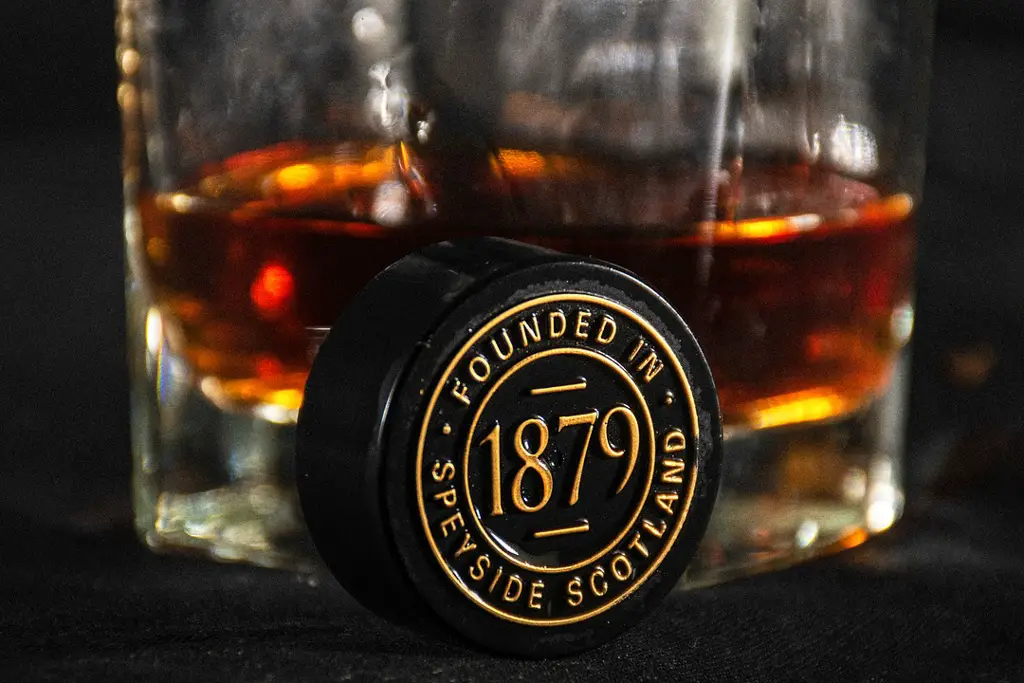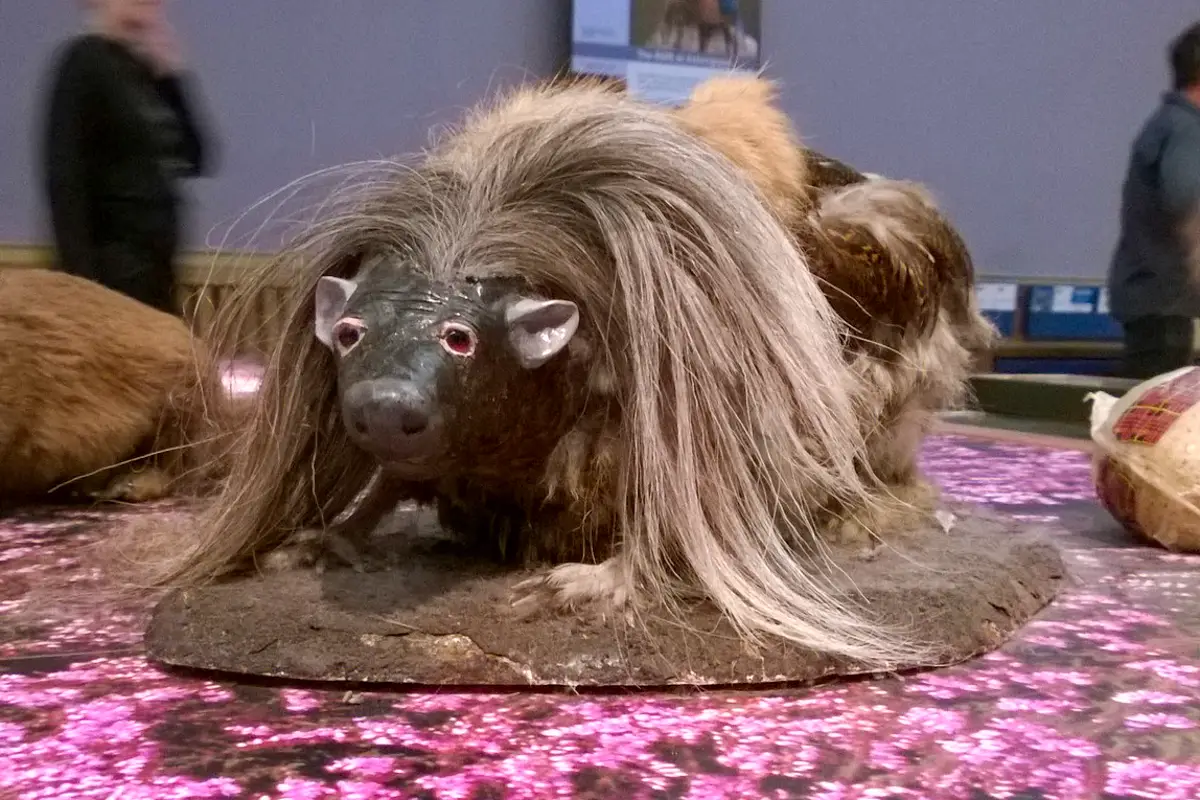“But what does the haggis animal actually look like?” The American lady looked up at the hostel owner, hanging on his every word.
The Scot took a deep breath and said, “The wild haggis is a wee furry creature, a bit bigger than a guinea pig with long fur. They have different length legs which means that they can easily run around the hills. When we can catch them, they make good scran, especially with neeps and tatties.”
And so perpetuates the urban legend of the wild haggis.
Read more: (opens in new tab)
- Where to find Dinosaur Footprints on the Isle of Skye
- Wildlife on the Isle of Skye
- Sligachan Bridge, Isle of Skye: The Legend of Eternal Youth
What is a Wild Haggis?
The wild haggis (also known as Haggis scoticus) is a wiry-haired animal that has long held a beloved place in Scottish heritage. These remarkable rodent type creatures live in the Scottish highlands where they run freely around the hills. They’re hunted to be used as the primary ingredient for Scotland’s national dish, haggis, neeps and tatties.
Wild haggis is very adept at surviving in cold conditions and this is why they have evolved to have such a thick mane. They also have longer legs on one side of their body than the other. This is so that they can traverse around the mountains quickly with ease. There are two different kinds of haggis, one with a longer set of legs on the left side which can only run clockwise and the other type with a longer set of right legs which run anti-clockwise.

As the wild haggis can only run in one direction, they find it hard to evade predators and are easy to catch. There can also be trouble with mating between the two types. A male of type one will need to turn to face the same direction as a female of type two in order to mate. However, during the turning movement, it is easy for the male haggis to lose his balance and tumble down the hill.
In the rare instance that the male haggis can breed between types, the offspring are helplessly unstable which causes them to roll down the hills and right into the hunter’s net. Nature’s loss is our gain!
Scotland’s Most Popular Dish: Haggis, Neeps and Tatties
Haggis is the national dish of Scotland that has been enjoyed for centuries. It can be found everywhere in Scotland, from upmarket restaurants to fish and chip shops. You can even buy it in a can from the supermarket!
Although the Scots need no occasion to indulge in a bit of haggis, the meal is traditionally consumed on Burns Night (to celebrate the life of beloved poet Robert Burns), alongside neeps (turnips) and tatties (potatoes).
Burns was the first to really draw attention to Scotland’s national dish through his poem ‘Address to the Haggis’. In the poem, Burns lovingly crowns haggis the chief of all meats! It is still the first item on any Burns supper today and after the poem has been recited, the haggis is ceremoniously cut with a large knife.
Where can I see a Wild Haggis?
Wild haggis is native to the highlands so you’ll need to be in the hills if you are going to stand any chance of seeing them. The haggis usually come out at night so it is highly unlikely that you’ll spot them during the day. If you are one of the few lucky ones who happens to stumble across a wild haggis, run at it head on to catch it. Owing to its uneven legs, it won’t be able to turn around.
Sadly, wild haggis are very elusive creatures so your chance of seeing one first-hand is remarkably low. For a while, The Scotsman Newspaper actually ran a competition where you could win a trip to Scotland if you spotted a haggis on one of their live webcams.
To increase your chances of seeing wild haggis on your trip, your best bet is to team up with a local haggis hunter, sometimes known locally as a gillie (and bring binoculars).
If you’re nearing the end of your trip and you still haven’t been lucky enough to spot a wild haggis, head to the Kelvingrove Museum in Glasgow where you’ll be able to see a rare taxidermy of one.
Wild Haggis Hunting
Whilst some have tried to keep haggis as pets and farm them, the consensus is that wild haggis tastes better. As haggis forms the basis of Scotland’s most popular dish, haggis hunting is big business. Traditionally, haggis hunting season begins on St Andrew’s Day (30th November) and lasts until Burns Night (25th January).
If you are trying to catch wild haggis, it is important to mask your odour. The haggis has a very good sense of smell and can identify humans from many miles away. To give themselves a higher chance of a successful hunt, many gillies knock back a wee dram before setting out.

Haggis hunting is often done in pairs. One person will run at the wild haggis in an attempt to startle it. As it tries to turn around, it is then likely to fall down the hill. The second person will wait at the bottom of the hill, ready to catch the haggis once it tumbles down.
Every year in the Scottish border town of Selkirk, the locals come out for the haggis hunt. The event is held just before Burns Night and gives people the opportunity to get stocked up for one of Scotland’s biggest celebrations. Hunters leave at 11.02 am sharp from the Town Arms pub.
Is Haggis a Real Animal?
If you’ve got this far through the article and you still haven’t worked it out, I must apologise. Sadly, haggis is not a real animal. However, the stories of these wee beasties have been passed down from generation to generation and are still a prominent part of Scottish folklore today.
According to a 2003 poll, a third of US visitors believe that the haggis is a real animal and a quarter thought they could catch one in Scotland. This poll might be a little outdated but it certainly proves the prominence of the legend and just how Scotland continues to captivate the minds of its visitors!
What is Haggis Really?
Haggis is a savoury pudding that consists of sheep offal. Minced heart, lungs and liver are combined with onions, suet and oatmeal before cooking. They are then encased in the animal’s stomach. Doesn’t sound very appetising, does it?

The haggis is coarse and crumbly in texture, as well as being heavily seasoned which gives it a peppery flavour. Although traditionally eaten with neeps and tatties, haggis is also enjoyed in sandwiches (known locally as a haggis piece) or formed into meatballs.
Since 1971, it has been illegal to import haggis into the United States. This is due to a ban on food products that contain sheep lung. The ban was created to lessen the risks of getting ill from eating products where gastrointestinal fluid may have leaked into the lung. Although exact percentages vary, it is estimated that the average haggis contains around 10-15% lung, cementing its status as a banned product in the US.
If you have been kidded on by a local about the wee hairy haggis running around the hills, don’t beat yourself up too much. The Scots are a funny bunch who love nothing better than a good laugh. And if you’re headed to Scotland, don’t miss the chance to try haggis. It really is nicer than it sounds! I probably wouldn’t recommend searching the hills for it though…



Well constructed article, made me snigger from start to finish.
I remember visiting the Highlands as a wee child on a falconry holiday and my Dad and his mate had me running round the hills in search of a live haggis for ages…. Hours of fun, albeit disappointing result and kept me out of their way for a bit!! The compensation was haggis, beeps and tatties for tea and I’ve lived it ever since!
Hi Angela! Thanks so much for sharing your story – sounds like a great holiday to me! Can’t beat a hearty portion of haggis, neeps and tatties! 🙂